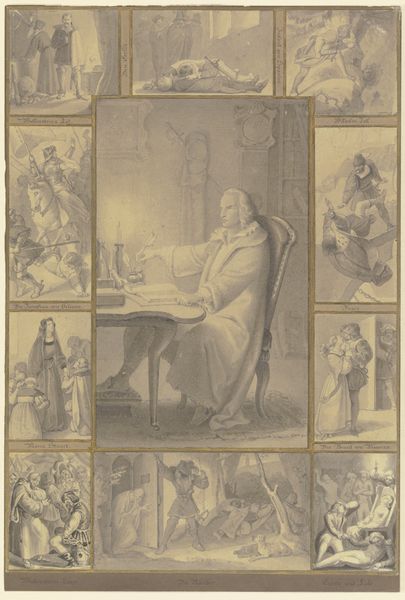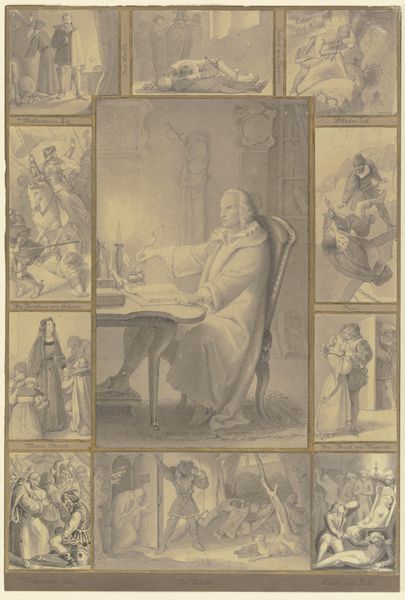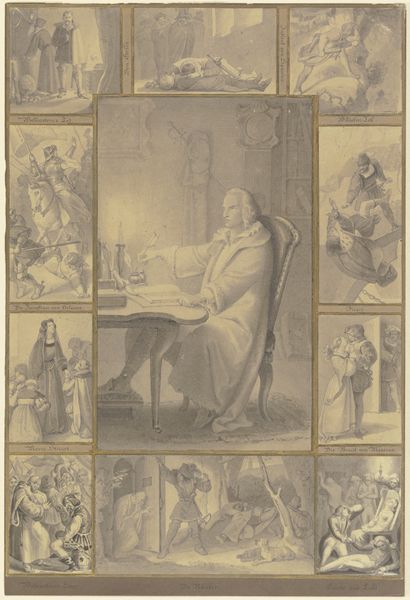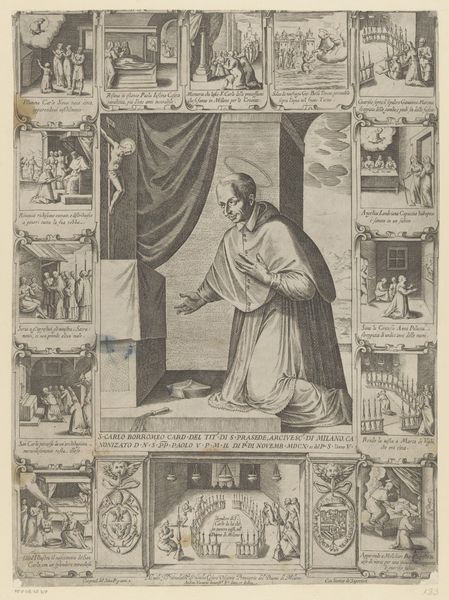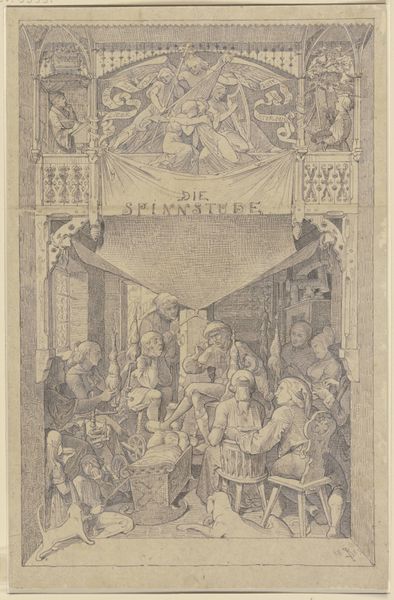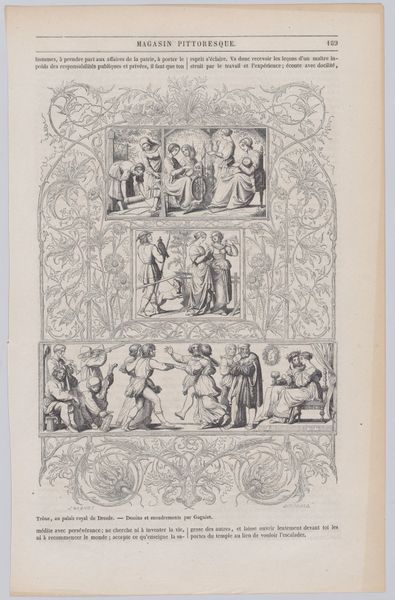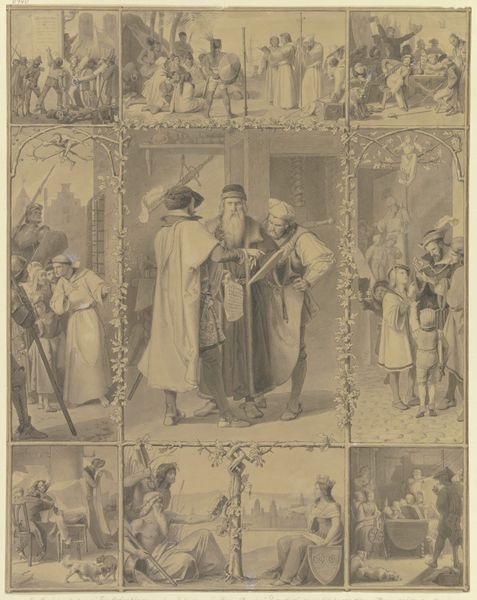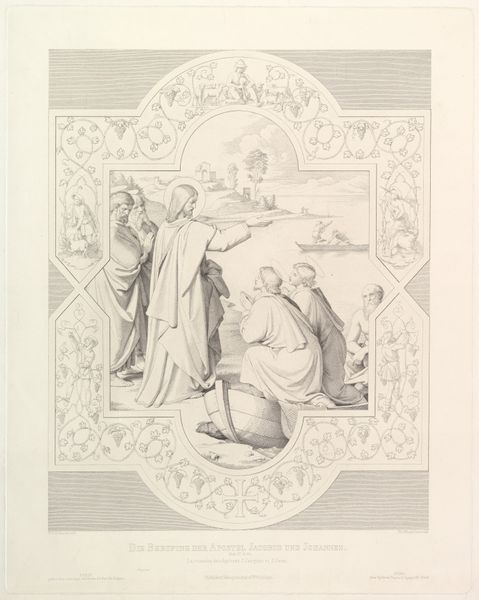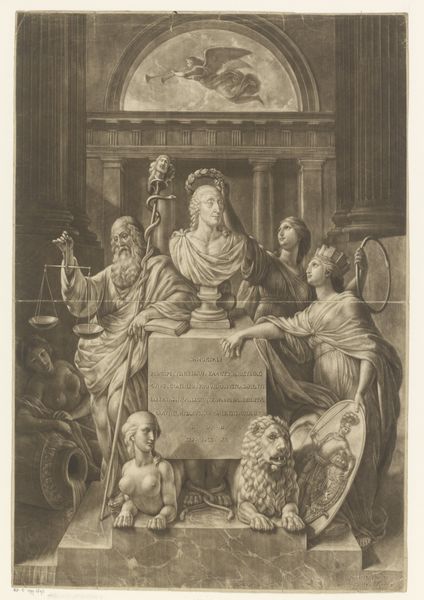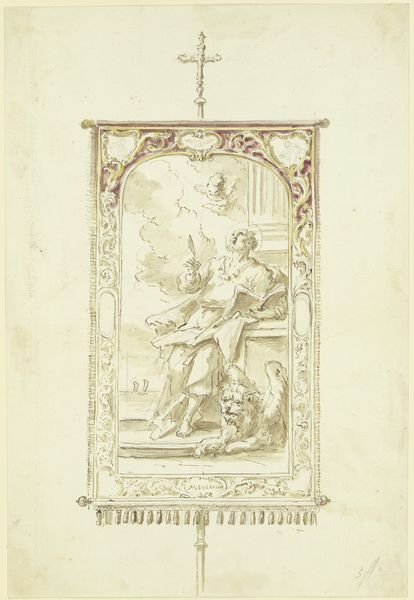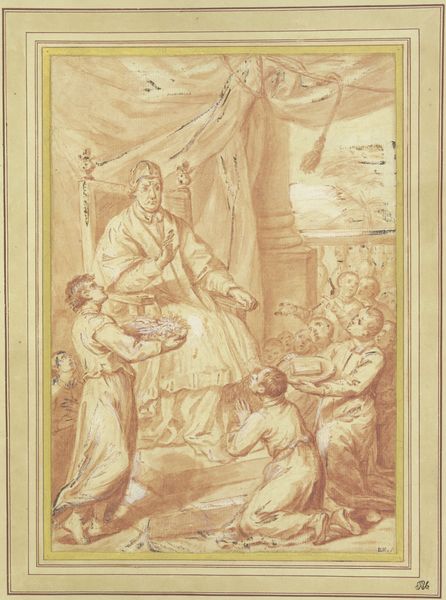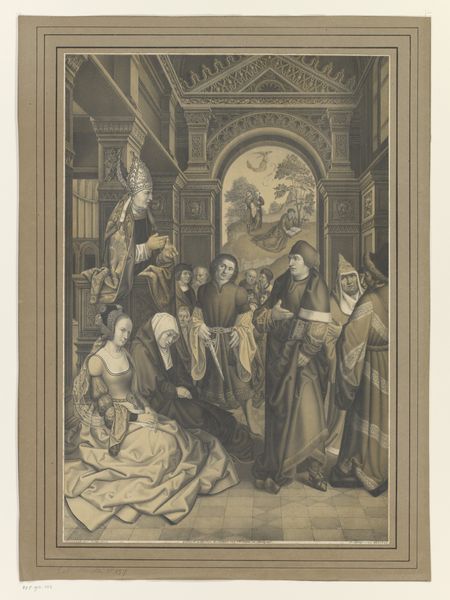
drawing, paper, ink, pencil
#
drawing
#
narrative-art
#
paper
#
ink
#
german
#
romanticism
#
pencil
#
history-painting
Copyright: Public Domain
Curator: This work, currently held at the Städel Museum, is by Alfred Rethel. It is titled "Die Verschwörung des Fiesco zu Genua"—or, "The Conspiracy of Fiesco in Genoa." Rethel created it using ink, pencil, and paper. Editor: The subdued gray tones immediately convey a sense of somber deliberation, while the central figure is framed by a series of vignettes, almost like panels of a graphic novel depicting related events. The impression is not quite classical history painting, but definitely tinged with drama and foreboding. Curator: Precisely. Rethel’s technique masterfully blends the aesthetics of Romanticism with the conventions of history painting, though this is technically a drawing. The narrative unfolds non-linearly; it’s about suggestion as much as explicit storytelling. Note the historical resonance inherent in this subject—Fiesco's conspiracy—a potent symbol of republican ideals colliding with authoritarian power. Editor: What stands out is the emotional charge—look at how Rethel deploys visual echoes between each panel: gestures, shadows, shared props or even physiognomic traits—creating an eerie sense of predestination. There is a weight, too, in how that somber tone unifies all the disparate parts, a mood I'd describe as inevitability and gloom. Curator: Absolutely, there’s a sense of inevitable doom hanging over all involved! Given the socio-political currents swirling in Germany at that time, Rethel's selection of subject feels decidedly pointed. He explores complex intersections between private ambition and broader societal currents, making Fiesco’s story relevant to contemporary struggles. How images circulate, especially historical ones, speaks to shared identity and values within a nation at any point. Editor: And the artist, of course, has made certain artistic choices, such as highlighting specific historical moments, to support his reading. It suggests an interesting point about how artists actively construct our shared cultural memory. The artist can manipulate, reframe, or altogether ignore aspects of history in the service of artistic intent, as the weightiness in this artwork does by unifying through somber mood. Curator: Rethel's artistry and the potency of the image make you question whose agenda it served, but even now we have revisited this work and unearthed our readings within the visual clues embedded. Editor: Indeed, an engaging intersection of the artist's vision and our interpretation as viewers through generations, it remains an artifact with enduring symbolic strength.
Comments
No comments
Be the first to comment and join the conversation on the ultimate creative platform.

